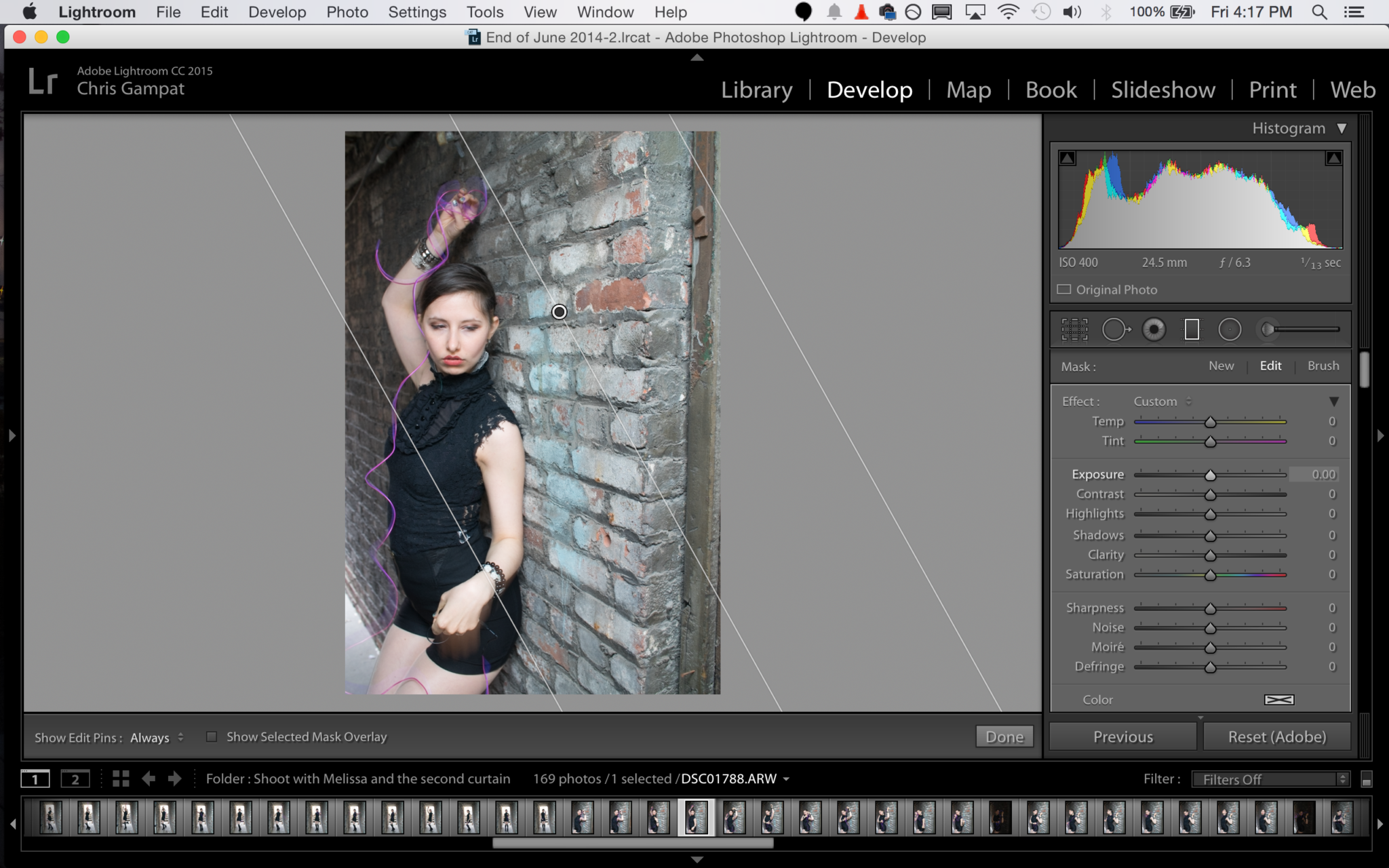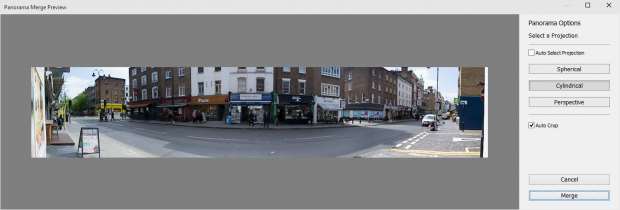
While performing the above workflow in Lightroom 6 my laptop’s fans start the rev up and my battery is drained in about 30-45 minutes. Under typical use and load my laptop’s battery will last 3-4 hours, it’s a Dell Latitude e6530, i7 processor, SSD, 9 cell battery. Lightroom importing, developing, and merging all seem faster but the biggest indicator of Lightroom 6’s performance is it’s ability to drain my laptop battery. Most of the talk about Lightroom 6 is it’s improved performance by using multiple CPU cores and tapping into the CPU on your dedicated graphics card. Other improvements and features in Lightroom 6 One more benefit is that lighroom will batch and run the HDR merge and Panoramic stitching as a task so you never have to wait you can just move on to the next image. The results of HDR Merge and Panoramic stitching are DNG RAW files so I retain all image range and data without compromising by export jpeg or littering my drive with huge TIFF files. The most awesome part of the new workflow is that Lightroom performs both HDR Merge and Panoramic stitching as RAW files.

I was excited to hear that Lightroom 6 now has built in HDR and Panoramic Merge features.
#ADOBE LIGHTROOM 6 REVIEW MAC#
I’ve ran LR4 on a Mac and Windows an equal amount.
#ADOBE LIGHTROOM 6 REVIEW MANUAL#
If, over the next year or so, we see more manual control given to the photographer through software updates you’ll see Lightroom pass up seasoned panorama software because of its intuitive software design.I’ve been a faithful user of Adobe Lightroom 4 since its release. You’ll be able to easily create panoramic images out of images that aren’t too busy but if you have images with a lot going on you’ll need more sophisticated software.įor a version 1.0 implementation I would say Lightroom is on the right track.

Lightroom certainly gets out of the photographers way… A little too far out-of-the-way. Great software will get out of your way and allow you to realize the vision that you have for the images you take. ConclusionĬreating panoramic images has difficulties of its own, before you introduce any type of software to the equation. According to Adobe, you’ll lose those adjustments when the photos merge so don’t waste your time.Īdobe also recommends using the lens correction tool to select the profile correction box before merging the images. It can be inconsistent and you’ll struggle with the same issues you would with most any panorama software (merging moving water may result in inconsistent ripple lines in the water, fast-moving clouds may not line up perfectly) but overall it’s ease of use more than makes up for its shortcomings.ĭon’t make any local adjustments on the images (brush, radial filter, etc.) you’ll be using in the panorama merge.

#ADOBE LIGHTROOM 6 REVIEW SERIES#
QualityĪside from the weakness above, the random series you’ll get that looks like it was pasted together by a preschool student, the results are pretty impressive. A simple fix would be to allow users to either add them in the order they are to be used or number them after they’ve been selected. You’ll be left with an odd panoramic image from time to time and there is nothing you can do about it. The panorama tool in Lightroom does not keep your images in the order you select them… Therefore, if it decides it wants to add one of your middle images to the front of a series, like attaching an arm on Frankenstein, it will. Once you’ve selected your images it will open a window, similar to the HDR window, and allow you to make limited selections. Much like the creation of HDR images in Lightroom 6, all you do is select the images you want, click “Photo” at the top of your screen, scroll down to “Merge” and select “Panorama”. Lightroom has made the process fool-proof but it’s not perfect. I imagine we will start to see a plethora of panoramic images on the photo sharing sites as well as Facebook now that creating a panoramic image is incredibly easy. The addition of the panorama merge feature in Lightroom 6 is a welcome one.


 0 kommentar(er)
0 kommentar(er)
